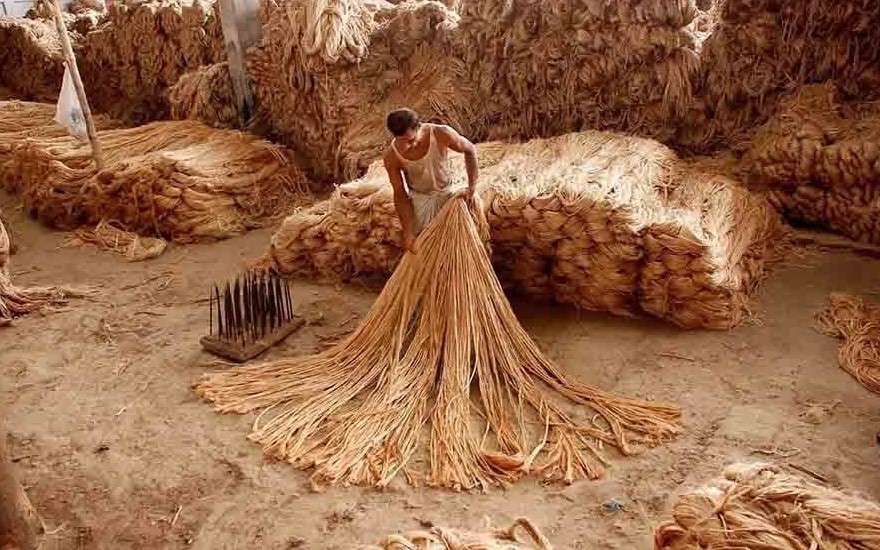
What is Jute Fibre?
Jute fibre is a plant fibre (also known as the golden fibre) that is known widely for its capability to spin into coarse and strong threads which are long, soft and shiny in nature. It is widely used in the production of hessian cloth, gunny cloth and burlap cloth.
Jute is titled the second most-produced plant fibre, only after cotton.
It is not very popular in the western world but is one of the primary textile fibres in India and its neighbouring countries. The crop grows over 10 feet high. and the fibre harvested is a single long string which is among the longest natural fibres in the world.
The crop grows in a very similar condition to that of rice and is best suited to warm places that have monsoon seasons annually.
Properties of Jute
Jute is popularly known for its below-mentioned properties-
– Relatively cheaper than many like fabrics and hence affordable for the masses
– Fibre is quite soft which makes it suitable for uses like bags, home decor etc
– Completely bio-degradable and reusable in nature thus making it an environmentally-friendly choice
– High durability with low extensibility which makes it best for industrial yarn, packaging fabric, bags etc
– It has high tenacity, sound and heat insulation property, low thermal conductivity, antistatic properties etc.
How is Jute fabric made?

Applications of Jute-
- Widely sought as a replacement for plastic bags, Jute bags are now becoming popular as an inexpensive and greener option. It comes with various options to choose from (do check our catalogue here) like shopping bags, beach bags, wine bags, juco (jute and cotton) etc.
- Used majorly in making cloth for wrapping bales of raw cotton, sacks and coarse cloth.
- Its golden fibre is woven into chair covers, carpets, rugs, curtains, hessian etc.
- Extensively used as a sustainable packaging material
